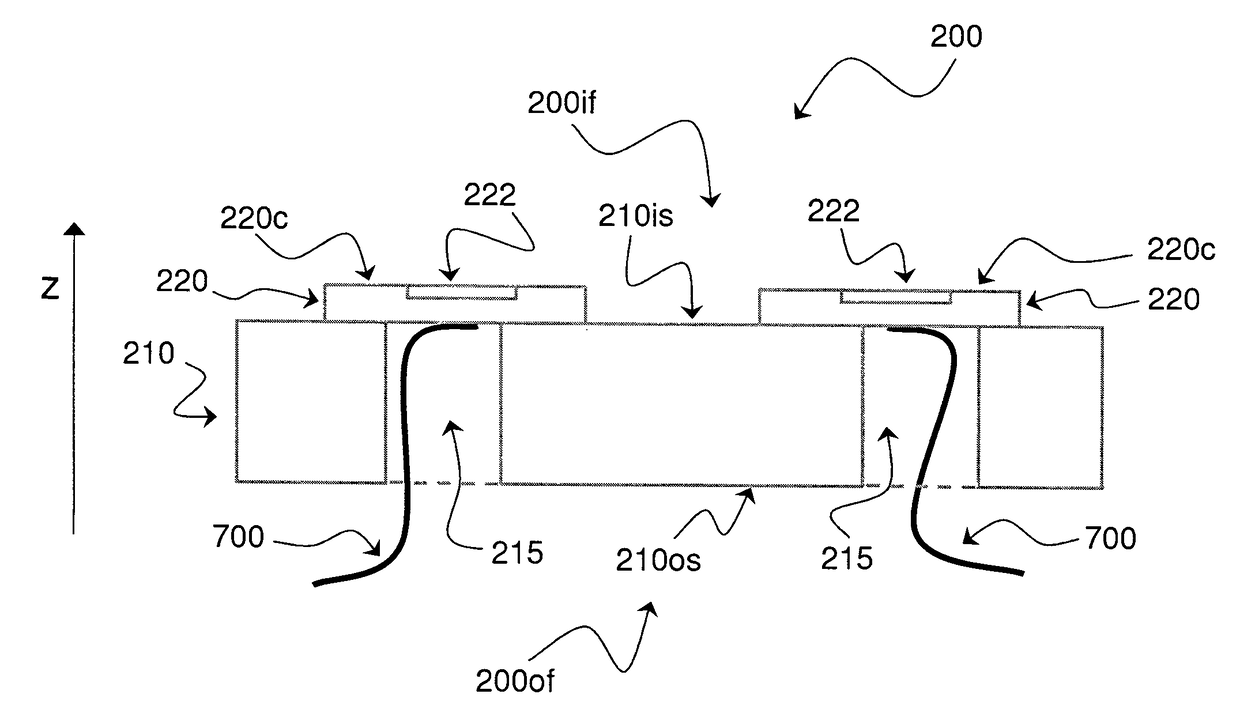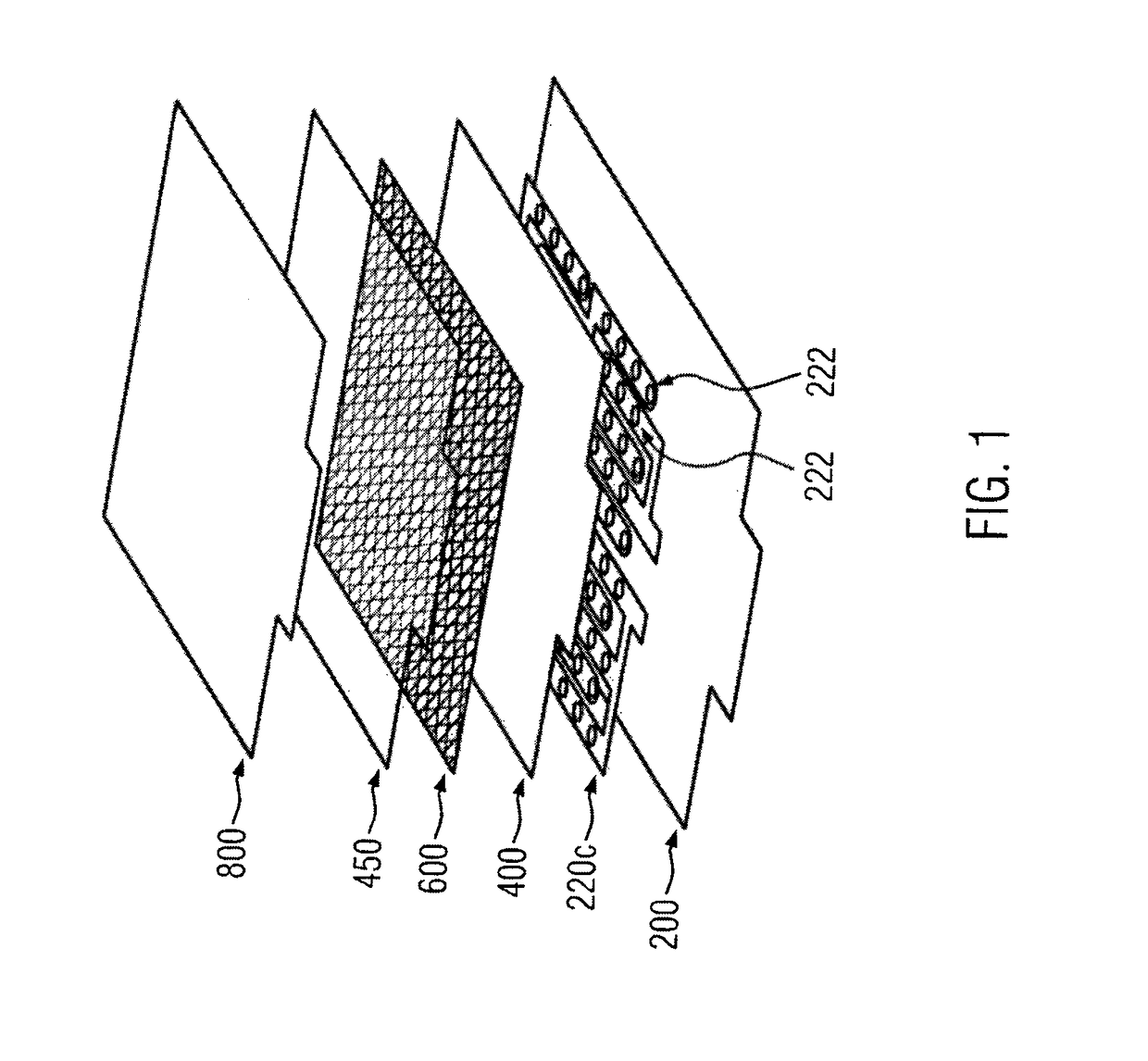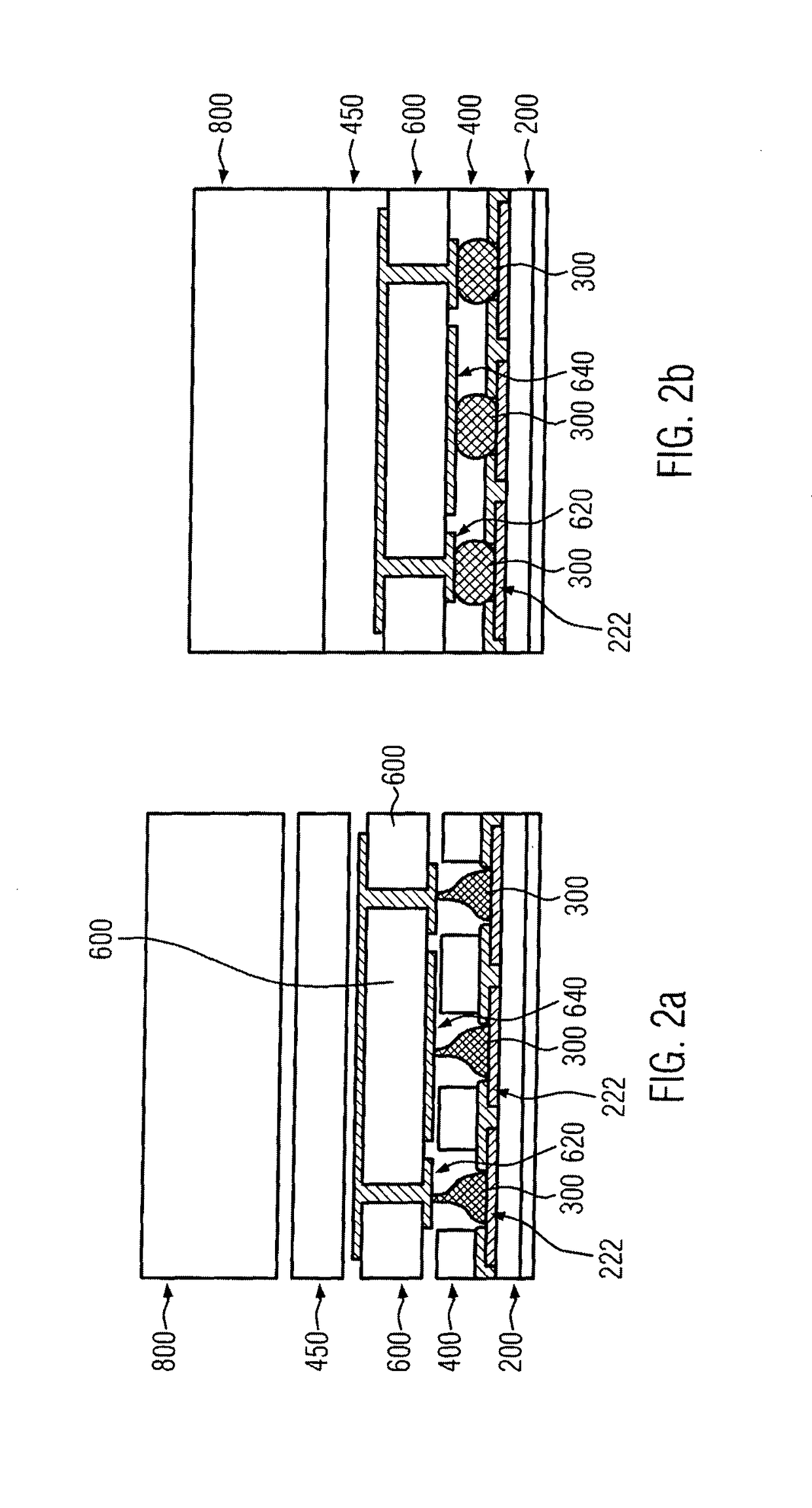Method of production of back-contact back-sheet for photovoltaic modules
a photovoltaic module and back-contact technology, applied in photovoltaic energy generation, electrical equipment, sustainable buildings, etc., can solve the problems of reducing affecting the efficiency of the solar module's cells, so as to achieve the effect of simple opening process
- Summary
- Abstract
- Description
- Claims
- Application Information
AI Technical Summary
Benefits of technology
Problems solved by technology
Method used
Image
Examples
Embodiment Construction
[0039]In the following, the present invention will be described with reference to particular embodiments as shown in the attached figures. However, the present invention is not restricted to the particular embodiments described in the following detailed description and shown in the figures. Rather, the described embodiments simply show several aspects of the present invention whose scope is defined by the claims.
[0040]Further modifications and variations of the present invention will be clear for the person skilled in the art. As a consequence, the present description is to be considered as comprising all modifications and / or variations of the present invention, whose scope is defined by the claims.
[0041]In the following, the expressions “above” or “below” always refer to an imaginary ground plane. The expression “point A above (below) point B” indicates that the distance of point A to the ground plane is longer (shorter) than the distance of point B from the ground plane. Similarly...
PUM
 Login to View More
Login to View More Abstract
Description
Claims
Application Information
 Login to View More
Login to View More - R&D
- Intellectual Property
- Life Sciences
- Materials
- Tech Scout
- Unparalleled Data Quality
- Higher Quality Content
- 60% Fewer Hallucinations
Browse by: Latest US Patents, China's latest patents, Technical Efficacy Thesaurus, Application Domain, Technology Topic, Popular Technical Reports.
© 2025 PatSnap. All rights reserved.Legal|Privacy policy|Modern Slavery Act Transparency Statement|Sitemap|About US| Contact US: help@patsnap.com



